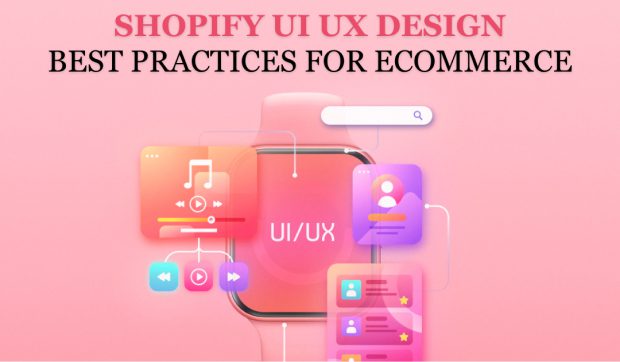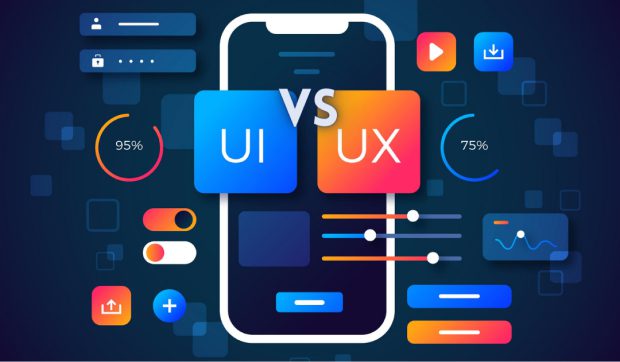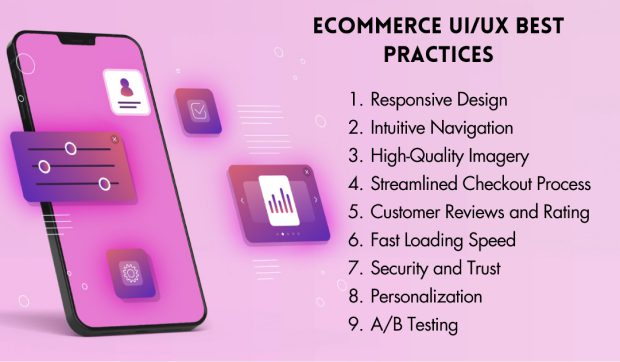Think of your online store as a cozy shop on the internet. The goal isn’t just to display products; it’s to make every click, scroll, and action enjoyable.
According to stats, 57% of users won’t recommend a poorly designed mobile site. An attractive and easy-to-use store is crucial for online shopping success today.
Shopify is a popular choice for setting up your store, but to excel, you need to understand Shopify ui ux design.
In this blog post, VKommerce Shopify Development Agency is going to share the key ideas and best practices for making your Shopify store look great and work well.
What Is Shopify ui ux?
Shopify ui ux design is like being a digital artist. It’s all about making websites and apps look good and work well.
UI designers create buttons, icons, and menus that people use on websites like your Shopify store.
Think of it as making a colorful and easy-to-use playground for people on their computers and phones.
UI designers are the ones who design all the fun stuff you tap and click on. They make sure everything looks nice and is easy to understand.
So, Shopify ui ux design is like painting a beautiful picture for your website or app. It’s making sure people have a great time using it, just like having fun in a playground.
Five Types of UI Design
There are several types of UI design, each tailored to specific user interfaces:
Graphical UI (GUI)
Graphical User Interface (GUI) is the most common type of UI design. It involves designing visual elements such as buttons, icons, and navigation menus.
On Shopify, GUI design is essential for creating an attractive and user-friendly storefront.
Command-line UI (CLI)
Command-line User Interface (CLI) is more text-based and suitable for power users.
While it’s not commonly used in e-commerce, it’s crucial for more technical tasks and configuration.
Touchscreen UI (TUI)
Touchscreen User Interface (TUI) is designed for devices with touchscreens, like smartphones and tablets.
Your Shopify store must be optimized for touchscreen interactions to cater to a wide audience.
Voice-controlled UI (VUI)
Voice-controlled User Interface (VUI) is gaining popularity with the rise of voice-activated devices like Amazon Echo and Google Home.
Integrating voice search and commands into your Shopify store can enhance the Shopify user experience.
Gesture-based UI
Gesture-based User Interface design is prevalent in mobile apps and some e-commerce websites.
It involves using gestures, such as swiping, pinching, or tapping, to navigate and interact with the content.
UI vs. UX: What’s the Difference?
UI (User Interface) and UX (User Experience) are like two best friends in the world of Shopify user experience. Even though they work together, they have different jobs.
UI is like the artist. It makes things look great. It decides on colors, shapes, and how everything appears on the screen.
UI is like the painter who creates a beautiful picture for you to see. UX, on the other hand, is all about how things feel.
It’s like the storyteller. UX designers think about how you’ll move through a website, how easy it is to find what you need, and if you enjoy the experience.
They’re like the author who writes an exciting book you can’t put down. Together, UI and UX create a fantastic digital world.
UI makes it look amazing, while UX makes sure it’s easy to use and enjoyable for you.
So, next time you visit a Shopify store, remember that UI and UX are the dynamic duo working behind the scenes to make your visit a great one.
Ecommerce UX Best Practices
Now that we’ve covered the fundamentals let’s explore some ecommerce UX best practices to enhance your ecommerce ui design:
Responsive Design – Your Digital Chameleon
Imagine your Shopify store as a digital chameleon, seamlessly adapting to the environment. In this case, the environment is the device your visitors are using.
Whether they’re on a desktop, tablet, or, most commonly, a smartphone, your store should respond flawlessly.
Embrace responsive design to ensure that every visitor enjoys a seamless and visually stunning experience.
Intuitive Navigation – The Treasure Map to Products
Picture your website as a treasure island filled with fantastic products. How do visitors find these treasures?
With intuitive navigation, of course! Clear and straightforward menus and pathways guide your users through your digital aisles, making it a breeze for them to discover the hidden gems.
High-Quality Imagery – Painting a Vivid Picture
In the digital realm, high-quality images and videos are your brush and canvas. They paint a vivid and enticing picture of your products.
The richer and more lifelike your visual content, the more you can immerse your customers in the story of your offerings.
Streamlined Checkout Process – The Shortcut to Satisfaction
Picture this: your customer is ready to make a purchase. But, as they proceed to checkout, they face a maze of forms and steps. What happens next?
Often, they abandon their cart. A streamlined checkout process, with as few steps as possible, is your shortcut to turning curiosity into sales.
Customer Reviews and Ratings – The Voice of Trust
Trust is the currency of e-commerce. Customer reviews and ratings are the voices of trust.
They offer shoppers the insights and assurance they need to make confident purchase decisions. It’s like having a chorus of satisfied customers singing your praises.
Fast Loading Speed – The Warp Drive of E-commerce
In the warp-speed world of the internet, every second counts. Slow-loading pages can make your visitors feel like they’re stuck in traffic.
Optimize your Shopify store for speed, and you’ll be their trusty warp drive, propelling them into a shopping frenzy.
Security and Trust – The Digital Fort Knox
Shoppers need to know their data is safe with you. Display trust signals like SSL certificates and secure payment options.
For this you need assistance from Shopify maintenance services to keep your digital Fort Knox secure.
When visitors see your commitment to security, they’ll feel more at ease and confident in making a purchase.
Personalization – The Tailored Shopping Experience
Think of personalization as your store’s resident genie. It grants wishes before they’re even made.
By using data and analytics, you can offer personalized product recommendations and content, making your visitors feel like they have their very own personal shopper.
A/B Testing – The Continuous Evolution
In the dynamic world of e-commerce, A/B testing is your magical elixir.
It allows you to continuously experiment and refine your user interface and user experience based on real user feedback and data. Each test is like adding another ingredient to your secret recipe for success.
Won’t miss our latest blog post on Shopify A/B Testing, to get more info about A/B Testing.
To Sum Up:
In this ever-evolving e-commerce adventure, these best practices are your trusty companions, leading you to a treasure trove of satisfied customers and soaring sales.
Implementing them in your Shopify store doesn’t just make your site better; it transforms it into a stage where your products shine, and your customers become the stars.
So, set sail on this exciting voyage and make your e-commerce experience a tale to remember.
FAQs
Q1: What is the difference between UI and UX?
A1: UI (User Interface) design focuses on the visual and interactive elements, while UX (User Experience) design deals with the overall user journey and satisfaction. Both are crucial for creating an exceptional e-commerce experience.
Q2: Does UI UX involve coding?
A2: UI UX design doesn’t necessarily require coding skills, but it’s beneficial to have a basic understanding of HTML, CSS, and JavaScript to communicate effectively with developers.
Q3: How do I become a UI designer?
A3: To become a UI designer, start by learning design principles, software tools, and building a strong portfolio.
Take courses or get a degree in design-related fields, and practice your skills regularly.
Q4: Is UI the same as graphic design?
A4: UI design is a subset of graphic design focused on creating interfaces for digital products.
Graphic design, on the other hand, encompasses a broader range of visual design work, including logos, print materials, and more.










